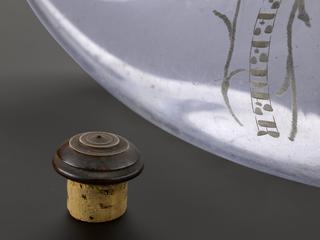




Ceramic pastille burner for use in a domestic setting to release a fragrance, made in the form of a house with garden, c. 1821-1850.
Originating from the 16th century, when they would almost exclusively be found in wealthier households and often be made from silver, pastille burners were essentially air fresheners. Pastilles were lozenge-like ‘pellets’ that could be slowly burned to release a fragrant smell. Originally homemade mixtures of charcoal, gum and a fragrance such as lavender or sandalwood, by the 1800s they were being mass-produced as were the holders, which were by then largely ceramic. Produced cheaply in the Staffordshire potteries, they were typically fashioned as houses or cottages surrounded by a garden
During this period, theories of disease focussed on the idea of miasmas – foul smelling vapours that were believed to carry and spread disease. Domestic devices like these, while not protecting the householder, could at least rid the house of the worst of the offending odours.
Details
- Category:
- Public Health & Hygiene
- Collection:
- Sir Henry Wellcome's Museum Collection
- Object Number:
- A600108
- Measurements:
-
overall: 175 mm x 122 mm x 105 mm, .768 kg
depth: 105mm
height: 185mm
weight: 0.77kg
weight: 1.69757lbs
width: 122mm
- type:
- pastille burner
- credit:
- Loan, Wellcome Trust




